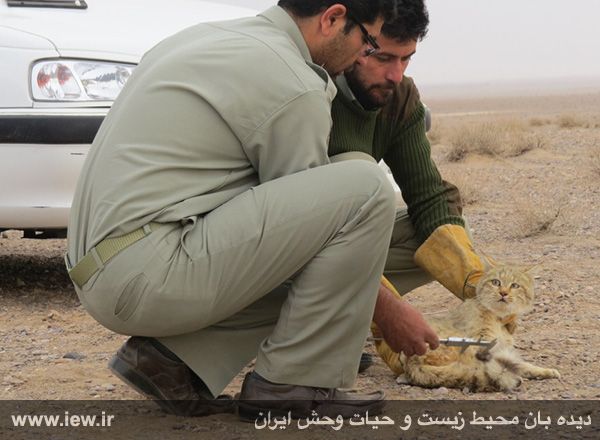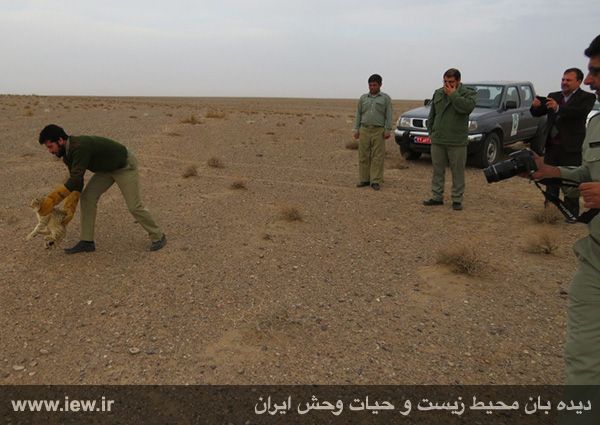This week a sand cat was released from a Bustard trap in Khorasan. The rare cat received immediate medical treatment, and was released back into the wild the same day. Its capture triggered a search-and-destroy mission for other poachers’ traps in the area. Read more, in Persian, here.

Sand cats are the only cat found primarily in true desert and tolerate the extremes of heat by their burrowing behaviour, and their thickly furred feet. They eat small rodents, birds, and lizards and are apparently “capable of rapid digging to extract [their] prey”. They may cover their kills with sand and return later to feed. They don’t need to drink water, and can satisfy their moisture requirements from their prey, although they will drink readily if water is available.
See a sand cat living in captivity in the video here:

The sand cat in Khorasan was caught in a trap for Houbara Bustard.
These birds are also endangered. But while the sand cats are threatened by desert habitat degradation and the introduction of domestic dogs, the Houbara Bustards are affected by the large numbers of birds used to feed the appetite of Arab falconers for ‘sport’.

Although the Bustards are protected, poachers trap and export them to the Middle East for hunting. In Pakistan, where Bustard Hunting is banned, the federal government has issued special named-person permits to Gulf Royals. For example in January 2014 one Saudi Prince was responsible for the death of 2100 birds on a 30 day hunting trip. He had a permit, but these permits are apparently for:
– Up to 100 birds, and 2100 birds were killed
– 10 days, and he was on a 30 day hunting trip
– A named person, but various other people also hunted
– An allocated area, excluding reserved and protected areas, and this Prince hunted both in a specifically protected area, and outside the area he was allocated.
These permits were declared illegal in Sindh in January 2015, but I wonder if this merely puts pressure on the poaching-and-export industry? If you have any desire to see how this ‘hunting’ is done, this video shows a collection of SUV-style vehicles in Qatar trying first to induce a solitary bustard to fly, and then racing after him (or her) to be in at the difficult-to-see all-blood-and-feather kill. All very sportsmanlike, I don’t think!
It’s not quite Oscar Wilde’s “the unspeakable in pursuit of the uneatable” as the bustards are, I read, considered to be a delicacy.
I’ve included an image of the cat being released safe and sound back into the wild. It’s not such good news for all the Houbara Bustards being trapped and hunted.